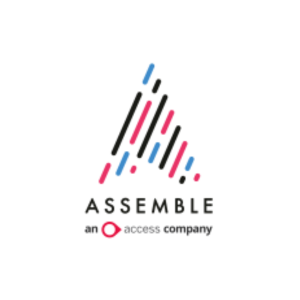Insights
INSIGHTS
All Topics
Five reasons digital strategies fail
03 Feb 2023by Mary Wessel
If you’re looking for long-term success (and who isn’t?) you’ll need to have a strong and forward-thinking digital strategy in place
The Charity Digital Skills Report 2021 showed that 60% of charities now have a strategy, that’s 11% more than 2020. So, as a sector, we’re taking tech seriously.
Having an effective digital strategy in place can help you plan how to use tech to improve the way your charity runs and delivers its services. That could include how digital can help streamline processes, increase community reach, automate services, or boost fundraising.
A strategy will keep you moving in the right direction towards specific aims. Creating an effective strategy – one that has buy-in across your organisation – will take time, thought, and collaboration.
Luckily there’s lots of helpful information to get you started, including our own back to basics guide, information on how to write a strategy and a webinar.
According to a 2020 study by Boston Consulting Group, “70% of digital transformations fail, falling short of their objectives, which often produces profound consequences”. To make sure your charity isn’t one of them, here are five potential pitfalls to avoid.
Lack of transparency
Having a strategy can help to improve transparency across your organisation. It allows everyone to know what’s expected of them. And why is that important? Well, organisational transparency is the number one factor for workplace happiness, and it improves productivity and creativity.
So hiding your strategy away and giving ownership to only a few select people is never going to lead to its success. While it’s being created, save it somewhere easily accessible for all stakeholders to save relevant documents. And when it’s been launched, as well as posting it somewhere obvious, sing about it from the rooftops – on the intranet, at team meetings, at town hall events.
Not assigning roles and responsibilities
Simply put, defining who needs to do what and by when means it’s more likely to get done. And that needs to be a named person, rather than a whole team or group.
Assigning roles and responsibilities not only provides greater accountability and transparency, it also helps to improve team buy-in. Making people feel part of the project gives a greater sense of shared ownership, which can then lead to greater productivity and positivity.
When putting your strategy together, tools such as Trello allow you to easily assign work to different people, making it obvious to anyone who refers to it who is responsible for what.
Unclear goals
A strategy is a roadmap, bringing clarity on what’s needed to achieve your aims, as well as the steps needed to reach them. But if your goals are hazy and vague, how will you know if they’ve been achieved?
Using the SMART criteria is a well-established way to set clear and precise goals. That means making your goals specific, measurable, achievable, relevant and timed. Or you could create FAST goals (frequently discussed, ambitious, specific and transparent).
Also pay attention to the language you use when writing your goals. The digital world sometimes uses language that’s off-putting to those less tech savvy. Using accessible, plain English will not only make your goals crystal clear, but also help to keep technophobes on board.
Aiming too high, aiming too low
Having unrealistic goals is a path to failure. You want your goals to be neither over ambitious or under ambitious, and to do that you need to know your starting point.
The first step is to establish your baseline, creating a snapshot of where you’re at digitally. You could do this by taking a digital maturity assessment, digital skills audit, SWOT analysis, and business process mapping.
Also consider the resources needed to deliver your strategy, the time it will take, and if there are any potential bumps in the road ahead that could delay delivery. That will include looking at the bigger picture outside your organisation and identifying any risks or opportunities.
Failure to gain buy-in
It’s all well and good having a beautifully crafted strategy, but you need to get buy-in from across the organisation or it could fall flat. Firstly, you’ll need the support of any decision makers and stakeholders involved and make sure they’re fully bought into it. That will make moving the strategy forward more straightforward, as they’ll already understand the purpose and approach.
Secondly, you want teams to be excited about change, rather than resistant. Again that means communicating early and often about the benefits of the approach, and the improvements it will bring for all stakeholders – staff, supporters and service users. Making sure they are informed (or better still, involved) right from the start, will avoid misunderstandings later on, and spell out just how digital transformation can make their work life better.
Mary Wessel
More on this topic
Recommended Products
19 Dec 2024by Christine Chiu
How to recruit digital volunteers
10 Dec 2024by Laura Stanley
How to revisit your charity’s storySponsored Article
06 Dec 2024by Ioan Marc Jones
How charities stopped centring service users
Our Events
Charity Digital Academy
Our courses aim, in just three hours, to enhance soft skills and hard skills, boost your knowledge of finance and artificial intelligence, and supercharge your digital capabilities. Check out some of the incredible options by clicking here.






















